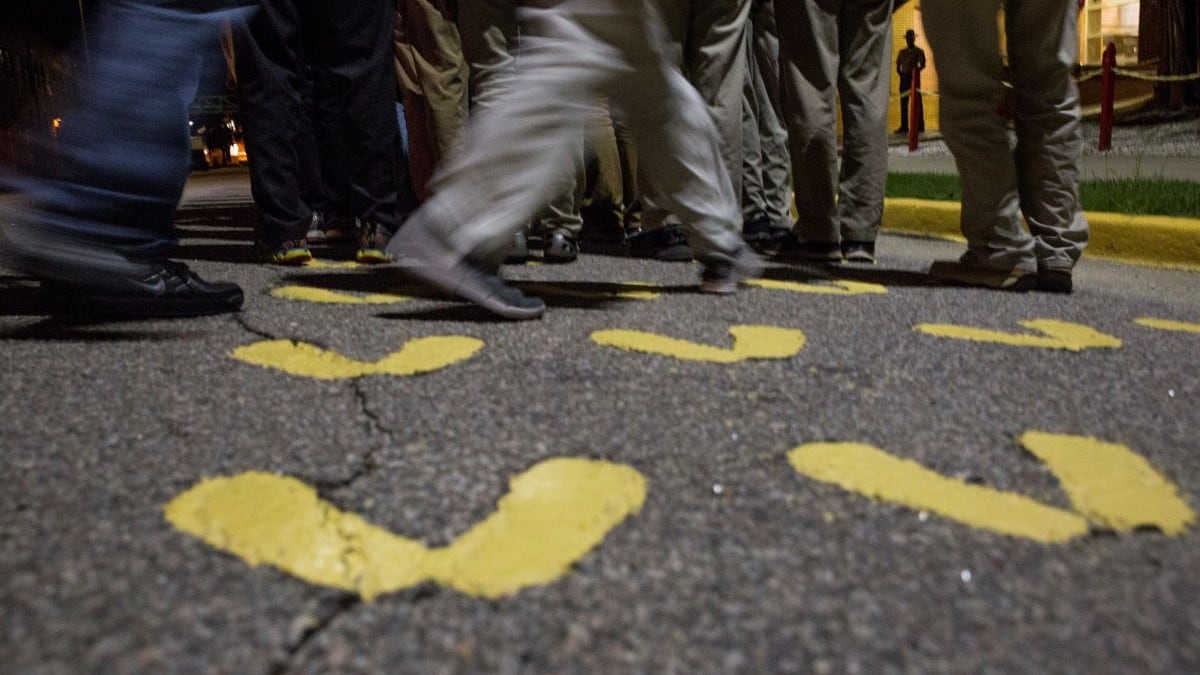Marine installations in Southern California canceled some training operations over the weekend in anticipation of a tropical storm, with one base in the desert pausing a large training exercise.
The Marine Corps halted Service Level Training Exercise 5-23 at Marine Corps Air-Ground Combat Center Twentynine Palms on Friday because of the “potential for extensive impacts” from what was then called Hurricane Hilary, according to a Marine Corps news release.
Later downgraded to a tropical storm and then a post-tropical cyclone, Hilary dropped more than half an average year’s worth of rain on some areas, including Palm Springs, California, which saw more than 3 inches of rain by Sunday evening. It was the first tropical storm to hit Southern California since 1939, when a storm killed nearly 100 people.
Sunday was the wettest day on record in San Diego, with 1.82 inches of rain, the National Weather Service said in a post on X, formerly known as Twitter.
RELATED

“We are still assessing the extent of the damage on our base infrastructure,” Twentynine Palms, California, base spokesman 1st Lt. Johnathon Huizar told Marine Corps Times on Monday. “So far, we are seeing leaking roofs and isolated power outages to only small parts of the base.”
The base’s public works division will first focus on restoring power and clearing roads, and then will turn to fixing building damage and addressing weaknesses in systems that the storm exposed, Huizar said. The division also will inspect all buildings for leaks and other damage and address any mold.
The base at Twentynine Palms, California, which is located in the desert near Joshua Tree National Park, also closed gyms, the Marine Corps Exchange and the commissary early afternoon Sunday, according to the base’s website.
Marines will move into the next phase of the exercise once base officials assess the training areas, Huizar said.
At Marine Corps Recruit Depot San Diego, one of the two Marine boot camps, “Outdoor training activities were temporarily suspended, and no injuries were reported during the storm,” Capt. Bridget Glynn, a spokeswoman for the base, told Marine Corps Times via email.
Training resumed as scheduled Monday, Glynn said.
But training has not stopped at Camp Pendleton, California, located approximately 38 miles from downtown San Diego, 2nd Lt. Jorin Hollenbeak, a spokesman for the base, told Marine Corps Times via email Monday.
At Marine installations in the region, nonessential personnel were told to show up to work no earlier than 9 a.m. Monday, according to the Camp Pendleton, California, website. The point of the delay was to “mitigate traffic and assess the safety of our roads and facilities,” Hollenbeak said.
“Our regional teams of first responders and range/facilities maintenance worked quickly over the last 24-hours to ensure there were minimal impacts to our installations,” Hollenbeak added.
At Marine Corps Air Station Miramar, California, located in San Diego, Marines “secured aircraft and equipment within hangars or through anchorage before the storm’s onset,” Capt. Michael Scaccia, a spokesman for the installation, told Marine Corps Times via email on Monday.
On Friday, the air station “implemented precautionary measures, such as securing facilities and minimizing on-base traffic,” Scaccia said.
Flight operations and other regular installation operations were scheduled to resume as usual Monday, Scaccia said.
The Navy took its own precautions in anticipation of the storm. Several ships sailed to sea from Southern California on Saturday to avoid the storm that was bearing down toward the area, the San Diego Union-Tribune reported.
The Defense Health Agency on Monday announced it would allow TRICARE beneficiaries in Los Angeles, Orange and San Diego Counties to get emergency refills of their prescriptions through Friday.
While fierce storms are a rarity in Southern California, Marine bases on the East Coast are no stranger to them.
In September 2018, Hurricane Florence struck Marine installations in North Carolina, including the large base Camp Lejeune in Jacksonville. At Lejeune and nearby Marine Corps Air Station New River, North Carolina, 388 buildings sustained roof damage and 319 experienced interior damage, Marine Corps Times previously reported.
The Marine Corps said in February it would prioritize making its bases more resilient in the face of destructive weather events, which scientists say have become more frequent because of climate change.
The Corps is exploring 3D-printing construction materials so that bases can bounce back quickly if infrastructure gets damaged, according to the Installations and Logistics 2030 planning document.
The Associated Press contributed reporting.
Irene Loewenson is a staff reporter for Marine Corps Times. She joined Military Times as an editorial fellow in August 2022. She is a graduate of Williams College, where she was the editor-in-chief of the student newspaper.





